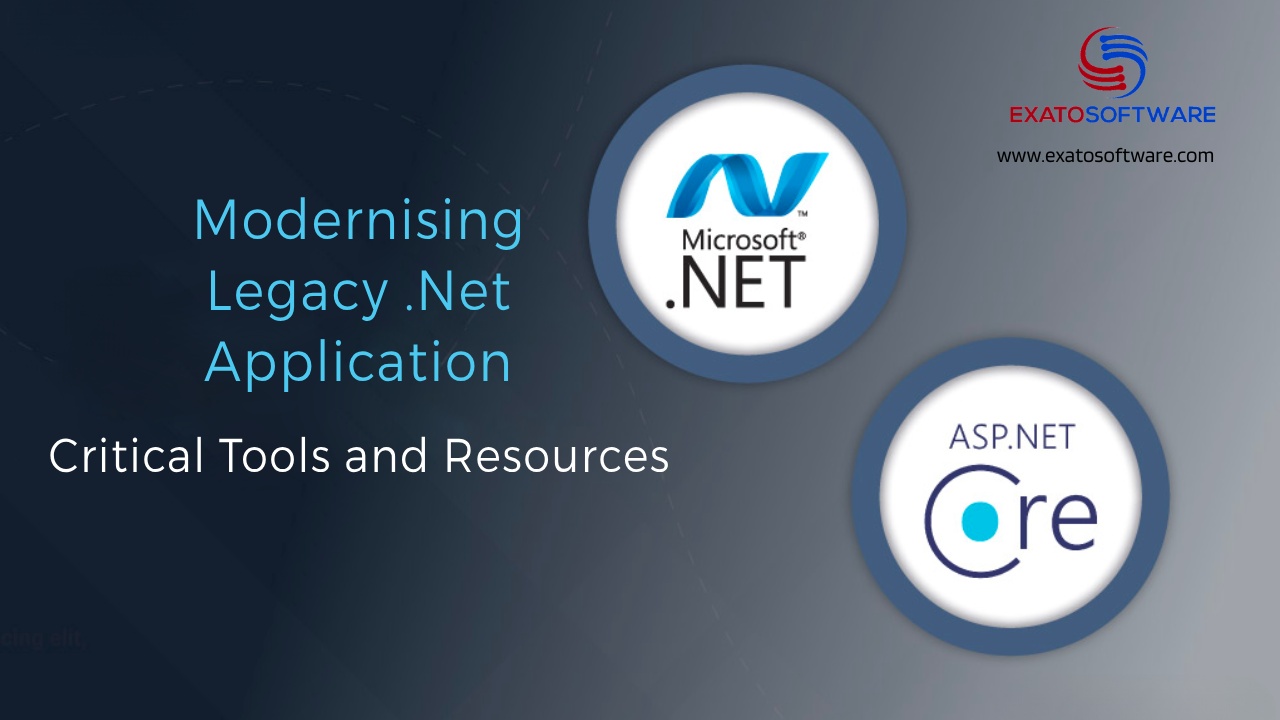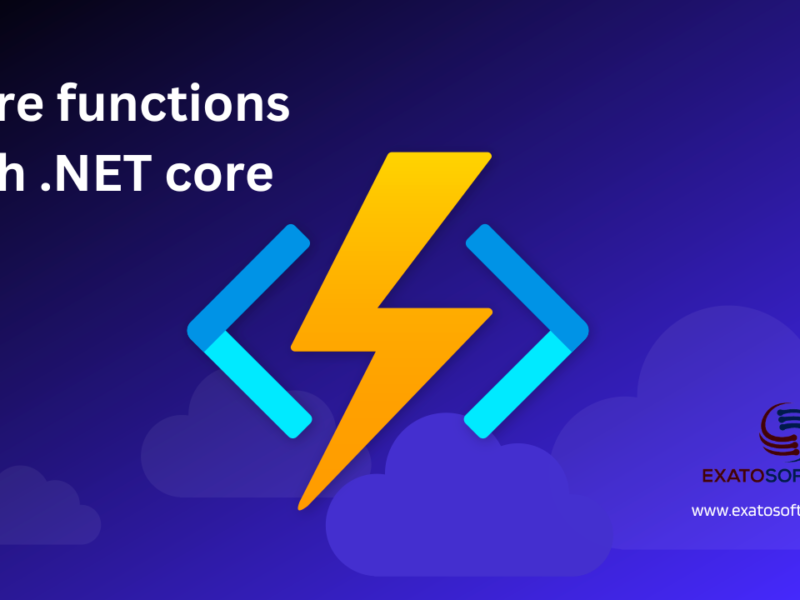Migrating a legacy .NET application to .NET Core 5 and higher versions offers numerous benefits, including improved performance, cross-platform compatibility, enhanced security and access to modern development features and ecosystems. Some of the major pluses are –
1. Cross-Platform Compatibility:
.NET Core and higher versions are designed to be cross-platform, supporting Windows, Linux, and macOS. Migrating to .NET Core allows your application to run on a broader range of operating systems, increasing its reach and flexibility.
2. Performance Improvements:
.NET Core and later versions introduce various performance enhancements, such as improved runtime performance, reduced memory footprint, and faster startup times. Migrating your application to .NET Core can lead to better overall performance and responsiveness.
3. Containerization Support:
.NET Core has native support for containerization technologies like Docker. Migrating to .NET Core enables you to package your application as lightweight and portable Docker containers, facilitating easier deployment and scaling in containerized environments.
4. Side-by-Side Versioning:
.NET Core and higher versions allow side-by-side installation of runtime versions, meaning multiple versions of the .NET runtime can coexist on the same machine without conflicts. This flexibility simplifies deployment and maintenance of applications with different runtime dependencies.
5. Modern Development Features:
.NET Core and later versions provide modern development features and APIs, including support for ASP.NET Core, Entity Framework Core, and improved tooling in Visual Studio. Migrating to these versions enables developers to leverage the latest features and frameworks for building modern, cloud-native applications.
6. Enhanced Security Features:
.NET Core and higher versions offer enhanced security features, such as improved cryptography libraries, better support for secure coding practices, and built-in support for HTTPS. Migrating your application to .NET Core helps improve its security posture and resilience against common threats.
7. Long-term Support and Community Adoption:
.NET Core and higher versions receive long-term support from Microsoft, ensuring regular updates, security patches, and compatibility with evolving industry standards. Additionally, .NET Core has gained significant adoption within the developer community, providing access to a wealth of resources, libraries, and community-driven support.
8. Cloud-Native and Microservices Architecture:
.NET Core and higher versions are well-suited for building cloud-native applications and microservices architectures. Migrating your application to .NET Core enables you to take advantage of cloud services, scalability, and resilience patterns inherent in modern cloud platforms like Azure, AWS, and Google Cloud.
9. Open-source Ecosystem and Flexibility:
.NET Core is an open-source framework, fosters a vibrant ecosystem of third-party libraries, tools, and extensions. Migrating to .NET Core gives you access to a broader range of community-driven resources and enables greater flexibility in customizing and extending your application.
10. Futureproofing and Modernization:
Migrating a legacy .NET application to .NET Core and higher versions future-proofs your application by aligning it with Microsoft’s strategic direction and roadmap. By embracing modern development practices and technologies, you can ensure the long-term viability and maintainability of your application. For migrating a legacy application to .Net Core 5 or higher version you may need to know certain tools. Along with tools at times you may need resources. Here is a list of popular and widely used tools and trusted resources for migration.
Tools
1. Visual Studio:
Visual Studio provides a range of features for .NET migration. For instance, you can use the “Upgrade Assistant” feature to identify potential issues and automatically refactor code during the migration process.
2. .NET Portability Analyzer:
This tool helps assess the compatibility of your .NET applications across different frameworks and platforms. For example, you can use it to analyze how portable your code is between .NET Framework and .NET Core.
3. Visual Studio Upgrade Assistant:
Suppose you have an existing ASP.NET Web Forms application targeting .NET Framework 4.x. You can use the Upgrade Assistant to migrate it to ASP.NET Core, which offers improved performance and cross-platform support.
4. ReSharper:
ReSharper offers various refactoring and code analysis tools that can assist in the migration process. For example, you can use it to identify deprecated APIs or outdated coding patterns and refactor them to align with newer .NET standards.
5. Entity Framework Core:
If your application uses Entity Framework 6 (EF6), you can migrate it to Entity Framework Core to leverage the latest features and improvements. For instance, you can update your data access layer to use EF Core’s new features like DbContext pooling and improved LINQ query translation.
6. Azure DevOps:
Azure DevOps provides a suite of tools for managing the entire migration lifecycle, from source control and build automation to continuous deployment and monitoring. For example, you can use Azure Pipelines to automate the build and deployment process of your migrated applications.
7. Third-party Migration Tools:
Tools like Mobilize.Net’s WebMAP or Telerik’s JustDecompile offer specialized features for migrating legacy .NET applications to modern platforms like ASP.NET Core or Blazor. For example, you can use WebMAP to automatically convert a WinForms application to a web-based application.
Resources
1. Microsoft Documentation:
The .NET migration guide on Microsoft Docs provides detailed instructions, best practices, and migration strategies for upgrading your .NET applications. For instance, you can follow the step-by-step guides to migrate from .NET Framework to .NET Core.
2. Community Forums:
If you encounter challenges during the migration process, you can ask questions on platforms like Stack Overflow. For example, you can seek advice on resolving compatibility issues or optimizing performance during the migration.
3. Books and Tutorials:
Books like “.NET Core in Action” by Dustin Metzgar and Tutorials from the official .NET website offer comprehensive guidance on modernizing and migrating .NET applications. For example, you can follow tutorials to learn about containerization with Docker or microservices architecture with .NET Core.
4. Microsoft MVPs and Experts:
Microsoft MVPs often share their expertise through blogs and presentations. For example, you can follow MVPs like Scott Hanselman or David Fowler for insights into the latest .NET technologies and migration best practices.
5. Training Courses:
Platforms like Pluralsight offer courses like “Modernizing .NET Applications with Azure” that cover topics such as containerization, serverless computing, and cloud migration. For example, you can enroll in courses to learn about migrating on-premises applications to Azure PaaS services.
6. Consulting Services:
Consulting firms like Accenture or Avanade offer specialized services for .NET migration and modernization. For example, you can engage with consultants to assess your current architecture, develop a migration roadmap, and execute the migration plan.
7. Sample Projects and Case Studies:
Studying sample projects on GitHub or reading case studies from companies like Stack Overflow or Microsoft can provide practical insights into successful .NET migrations. For example, you can analyze how companies migrated large-scale applications to Azure or modernized legacy codebases using .NET Core.
By utilizing these tools and resources effectively, you can navigate the complexities of .NET migration and ensure a successful transition to modern frameworks and platforms.



